It is often not necessary to design and construct movie sets in Los Angeles. Its nature, streets and buildings are the best scenery. According to a long-standing tradition, one church was built here especially for shooting a Russian film back in the 1920s. The movie was shot, the film-makers and actors left, but the church remained and was given to a parish. Its current rector says that few people beyond the Orthodox community of Los Angeles know about this beautiful church with its prayerful atmosphere. Today, almost 100 years later, film-makers still rent the parking space of the Church of the Mother of God. It is a reality you quickly get used to.
Los Angeles is the center of the Greater Los Angeles Area with a population of over 17,000,000 people, the most populous city in California and the second largest city in the country.
In the sixteenth century, Native Americans lived on its coastal territory, then the Spanish came here by sea, and from the 1920s, the aircraft industry began to develop and many film studios were built.
People from over 140 different countries, speaking no fewer than 224 languages, currently call Los Angeles their home. An important and vivid element of the culture of Los Angeles is its numerous ethnic enclaves: Chinatown, Koreatown, Thai Town, Filipino Town, Little Armenia, Tehrangeles, Little Ethiopia.
The Russian community in L.A. numbers over 100,000 residents which makes it the fifth largest ethnic group in the city after Germans, Irish, Britons and Italians.
Immigrants from the former Soviet Union reside in different neighborhoods and suburbs of L.A., yet the largest number of them can be found in West Hollywood—one of the largest of the eighty neighborhoods of the Greater Los Angeles Area. Given the size of the megalopolis, it is not far at all from the city’s famous symbol. Russian-speaking print media are published here, tours of actors from Russia and countries of the former USSR are organized here, and Russian shops and restaurants are concentrated here. And, of course, that is true for Russian Orthodox churches as well.
Despite (or maybe due to) this diversity, some people get enchanted by the City of Angels, whereas others are totally disappointed with it. The real Los Angeles—the main center of film industry in the country and in the whole world—is very different from the Los Angeles shown in movies, cartoons and TV series.
In any case, if some of you think that L.A. is famous only for its film studios and actors that you are bound to meet at the Hollywood Walk of Fame, I have a good news for you: This city is also famous for its rich Christian heritage, represented by various Orthodox jurisdictions and traditions. There are three Russian Orthodox churches here, and they are concentrated precisely in the western part of the megalopolis as well as Hollywood, and their rectors are (more or less) representatives of three different generations in terms of both age and time of move to the USA: the older, the middle and the younger generations. Let us talk about them in this order.
The Holy Transfiguration Cathedral
The idea to build this church came into being in 1929. The initial group of Russian immigrants, which included White Army officers and Cossacks, collected $50 and organized the visit of Archpriest Nicholas Kicklovich from Harbin, who celebrated the first Liturgy for the faithful on May 13, 1930.
Services were held on the temporary premises for several years. In 1935, a fundraising program for obtaining a building for the church was launched and in 1937 a church building was purchased. Using the parishioners’ voluntary donations, they restored the church, and on October 17, 1937, it was consecrated in honor of the Transfiguration of the Lord.
When the North American Metropolia declared its independence in late 1946, some of the parishioners remained faithful to the Russian Orthodox Church Outside of Russia (ROCOR). In connection with this, the church was the subject of a dispute between ROCOR and the Metropolia in 1948-1949, which was settled in favor of the former.
“A large influx of emigrants to Los Angeles began after the Second World War, when refugees from Europe and the Far East crossed into America,” rector of the cathedral Protopresbyter Alexander Lebedev relates. “At that time a Russian school opened at the church which today has 140 students.”
Fr. Alexander was born in Austria, namely at a refugee camp near Salzburg. In 1951, his parents managed to move to America through the Church World Service agency; but for that they—people with higher education—had to work on a farm for three years.
Little seems to have changed over the decades. The same fate awaited all representatives of the subsequent waves of immigration. When his parents divorced, Alexander and his mother moved to Los Angeles. There he began the four-year parochial school at the Holy Transfiguration Church.
“Thus, my life has been connected with this parish for sixty-three years, and I have served here for thirty-five years,” Fr. Alexander continues his story. “At that time, life in Los Angeles was difficult. Old immigrants, who had come here after the First World War, did not trust the new immigrants who had moved here from the USSR following the Second World War. My wife’s father, Arseny Vasilyevich Romashko, was a representative of the new wave of immigration, but he succeeded in overcoming this distrust and he was elected as a church warden.”
Beginning in the 1950s, the parish began to design the construction of a large cathedral. The Association of Enthusiasts was set up and it raised funds for some thirty years until, in 1979, at last the construction of a new stone church commenced. In 1982, when the church was half-finished, regular services began. The church still had no domes then, and the local population sometimes was unaware to which denomination it belonged.
Now the cathedral with three altars is crowned by ten domes. Its iconostasis has as many as 130 icons painted by Vladimir Krasovsky, an icon painter and choir director from San Francisco.
“In the 1990s, Russian Orthodox started emigrating to Los Angeles—it was the third wave of emigration,” Fr. Alexander says. “Many of them were integrated into Church life. Now our parish consists of all these groups, along with Greeks, Serbs, Romanians and Americans who were converted to Orthodoxy from other denominations.”
There are eighty official members of the parish. According to representatives of the earlier waves of immigrants, newcomers from the former Soviet countries are reluctant to join the parish—they’re not used to it. And a similar situation can be observed throughout Orthodox America.
At the Holy Transfiguration Church they worship chiefly in Church Slavonic and use very little English. Those who wish to serve in English can attend neighboring parishes—those in honor of the Protection of the Mother of God and of the Holy Virgin Mary, where the Liturgy is celebrated in both languages. Therefore, their rectors joke that Los Angeles has three Orthodox churches but only one Orthodox parish!
The Holy Transfiguration Cathedral itself annually hosts youth gatherings and choir meetings of the Western American Diocese. In the summer, young parishioners have their scout camps. Since the 1930s, the cathedral has been home to the Aid to Russian Children Society, whose activities include the collection of funds for orphanages and children who need surgery: The cathedral’s parishioners cover their travel expenses, treatment, their parent’s stay in the USA for the period of their treatment, and rehabilitation. An aid fund for those in need is also attached to the cathedral. In Fr. Alexander’s view, church is not only a place where the Liturgy is celebrated, but it is also a center of social and charitable activity.
In the 1960s, the parish experienced a split. In 1963, a group of its former parishioners bought a plot at Argyle Avenue in Hollywood and established another large parish, in honor of the Protection of the Mother of God.
At the base of Hollywood Hills: the Church of the Protection
This church is situated in Hollywood itself, near the Walk of Fame, at the base of Hollywood Hills, where numerous movie stars and TV and sports celebrities live. In addition, a large number of Armenians and Russians who have nothing to do with the film industry have settled here.
The Church of the Protection of the Mother of God is the nearest to the famous Hollywood sign, installed on the south slope of Mount Lee in the Santa Monica Mountains in the summer of 1923. The original sign read “Hollywoodland” and had nothing to do with the movie industry, but advertised a new housing development. However, it began to attract tourists from the very beginning.
At first, the word “Hollywoodland” was lit at night, and during the daytime its white letters were seen at a distance of about twenty five miles. Actually, it was only planned to advertise “Hollywoodland” for eighteen months, but in the end, the sign remained in the same place.
In 1949, the sign was repaired and the final four letters removed. By that time, Hollywood, which was originally the name of a neighborhood, had already become the symbol of Los Angeles and of the whole entertainment industry.
The parish of the Protection of the Mother of God was established on June 16, 1952, with the blessing of the second First Hierarch of ROCOR Metropolitan Anastasius (Gribanovsky, 1873-1965). Initially, the community gathered on the premises at 150 South Alexandria Avenue. However, by 1964, the number of parishioners had considerably increased such that the building couldn’t accommodate them anymore, and in September of that year it was decided to find a more suitable home for the congregation as soon as possible. Thus they obtained an Old Catholic church at Argyle Avenue.
The Great Consecration of the repaired church was celebrated July 4, 1965. The church was consecrated by Metropolitan Philaret (Voznesensky, 1903-1985; the third First Hierarch of ROCOR), St. John (Maximovitch) of Shanghai and San Francisco, and Bishop Sava (Saracevic, 1902-1973) of Edmonton (Alberta, Canada).
A Sunday school, a cultural and educational center, and a big church hall were opened at the parish.
From 1967 till 2000, the community was under the spiritual guidance of Bishop Alexander (Mileant, 1938-2005), one of the few to obey the following commandment of Christ wholeheartedly: Go ye into all the world, and preach the Gospel to every creature (Mk. 16:15). The missionary booklets, on a wide variety of Orthodox themes, that Bishop Alexander and his assistants sent to many countries throughout the world, including Russia, are too many to count.
Vladyka Alexander, then Bishop of Buenos Aires and South America, reposed in the Lord on the night of September 12/13, the feast of his patron saint, the Right-Believing Prince Alexander Nevsky (commemorated August 30/September 12). You can find answers to many questions from an Orthodox point of view, from apologetics to everyday life problems, on the official website of Bishop Alexander which still exists: www.fatheralexander.org.
Ironically, the church’s holy objects—six reliquaries with saints’ relics and the vestments of St. John of Shanghai—ended up at a schismatic parish which refused to reconcile with the Moscow Patriarchate ten years ago. Since then, parishioners of the Holy Protection Church have been collecting relics for their temple.
The current rector of the Church of the Protection of the Mother of God, Archpriest Victor Tseshkovsky, has served in the altar of God for thirty-six years, and he never takes offense when others call him “a Soviet priest.”
“A Soviet priest is a special priest, so I don’t take it as an offense,” Fr. Victor says with a smile. “Under Brezhnev, a Soviet priest had to outwit his local official for religious affairs and make him report that there were ‘no problems’ in his territory. These priests did their best to preserve the Church amidst the ‘milder persecutions’ of that period.”
Fr. Victor himself has been in the Church since childhood. All five sons in his parents’ family became priests. His sister is a priest’s wife and even his nephews are clergymen. All served in the Dioceses of Crimea and Dnipropetrovsk. Then Fr. Victor was sent to serve in his first foreign parish—the newly-opened church in Sweden, followed by the St. Nicholas parish in San Francisco, a parish in Canada which needed a Ukrainian priest, and the St. Nicholas Patriarchal Cathedral in New York City. Also, there were parishes near Milan, in Spain, and the Canaries. After the restoration of Eucharistic Communion between the Moscow Patriarchate and ROCOR in 2007, he was invited to serve in ROCOR parishes, including the New Kursk-Root Icon Hermitage Monastery in New York, a church in Brooklyn, and now the Church of the Protection of the Mother of God of the Western American Diocese in Hollywood.
“It would be wrong to think that Orthodoxy and Hollywood are incompatible things,” Fr. Victor says. “This neighborhood has its own Orthodox life. Our parish is well-established and active. The parishioners of the church of Hollywood are Russian actors, film directors, sportsmen, creative intellectuals, and ordinary Russian-speaking newcomers from various countries of the former USSR. Every Sunday we serve two Liturgies. The earlier Liturgy is celebrated in English by an American priest and the later Liturgy is celebrated in Church Slavonic. Up to 200 worshippers receive Communion at both Liturgies. I plan to open a children’s studio at the parish: We have both good professionals and talented children.”
The Church of the Most Holy Theotokos
“If there are many cars in the parking lot of our church on a weekday, it means a movie is being shot nearby. The movie administration rents our parking lot and you can see Hollywood stars’s cars there,” rector of the Church of the Most Holy Theotokos Archpriest Nazary Polataiko relates. “A bus takes a crew and drives it to the shooting area.”
So this is a real “Hollywood church,” but above all it is a house of God. This church is Hollywood’s biggest secret.
“Nobody disturbs our parishioners coming to our church to pray and so everyone feel comfortable here,” Fr. Nazary continues. “People are so used to the faces that they regularly see on TV that nobody asks for autographs. The main thing is that our parish is a prayer meeting: Everybody prays here instead of ‘hanging out together.’ Many parishioners work in the film industry themselves. There are production directors, composers, script writers, and musicians. And even when the service is over and lunch (cooked by our sisterhood) begins, all gather at the church hall, drink coffee together and talk; but there is no hullabaloo—nobody grabs his cell phone for taking selfies!”
The parish of the Theotokos was founded in 1923 by a group of Russian immigrants who named it in honor of the Mother of God and Her icon “Seeker of the Lost.” Numerous holy objects are kept here: a particle of the True Cross, an icon of St. John of Kronstadt with a piece of his mantia, along with an icon of Holy Theotokos which was once blessed by the saint himself, and portions of the relics of the Great Martyr Panteleimon, the Right-Believing Princes Alexander Nevsky and Daniel of Moscow, the Venerable Seraphim of Sarov, the Holy Hierarchs Theophan the Recluse and Joasaph of Belgorod, Innocent of Moscow, John of Shanghai, Patriarch Tikhon of Moscow, Venerable Ambrose of Optina, and the New Martyrs Grand Duchess Elizabeth and Nun Barbara. The Tikhvin Icon of the Mother of God was painted on Holy Mount Athos as a gift to the Holy Tsar and Passion-Bearer Nicholas II. And in 2015, copies of two miracle-working icons of the Virgin Mary were brought here from Mt. Athos, namely the Vatopedi Icon from the monastery with the same name and the icon “Quick to Hear” from Dochariou Monastery.
Among the parishioners of this church were the Golitzin and Volkonsky counts, the composer Sergei Rachmaninov, the actress of Russian descent Natalie Wood, and our compatriots from the film and television industries.
Old parishioners donated the icons “Joy of All Who Sorrow” and of St. Nicholas the Wonderworker. The church also keeps an icon that once belonged to the composer Sergei Vasilevich Rachmaninov. His personal piano is inside the church hall and it is still used today at church and choir music concerts.
“I came here with the blessing of His Beatitude Metropolitan Onuphry of Kiev and All Ukraine, then Metropolitan of Chernovtsy and Bukovina,” Fr. Nazary recounts. “I was very pleased with my parish in Canada, but a bi-lingual priest was needed here. Among our parishioners there are some people who don’t know Russian at all—Americans of Irish and Chinese descent. Besides them, there are those who speak English poorly—mostly Ukrainians and Moldavians who came here to work.
“When I moved here, as an artist I appreciated the church at once—it is really beautiful. It was created with love and very tastefully. The temple preserves the spirit of antiquity and a prayerful atmosphere. One of my predecessors said that ‘incense flows from inside its walls.’”
The liturgical life of the church is very active for North America, with at least one Liturgy being celebrated on weekdays. On Pascha, a large crowd of people gathers in the yard. The procession goes around the block, and when the clergy enter the front gate of the church, the congregants at the tail of the procession are only just leaving the temple. The yard always serves as a continuation of the church on Pascha.
There are a Saturday school and a Sunday school at the church. The Saturday school is Russian where the Russian language, Russian history, Church, the Law of God and literature are taught. Every lesson begins with a prayer in the church and lasts from 10:00 AM till 3:00 PM. After that, all share a meal. Pupils are between five and sixteen, and teachers are professionals from the former USSR. Since it is an educational institution, a graduation certificate qualifies you for university study.
The Sunday school is held every second Sunday, with religion being taught in English.
A youth club for adults is held every Tuesday. It is the most active and attended event. The club members open every meeting by singing the Akathist hymn before the icon of the Mother of God “Seeker of the Lost” in both languages.
“On the first Tuesday of the month, we watch and discuss movies,” Fr. Nazary relates. “Sometimes the authors of the films are our own parishioners. On the second Tuesday we invite a lecturer: He can be a priest from an Orthodox church of any jurisdiction or a theologian. We don’t lack lecturers: There’s a local university with a Religious Studies department. Besides, we can arrange video conferences.”
On the third Tuesday of the month they have Bible lessons. Every last Tuesday, the rector delivers lectures on iconography and explains how to understand the language of icons.
“Every second Thursday we celebrate a prayer service and organize a ‘question-and-answer evening,’” Fr. Nazary goes on.
Fr. Nazary was born in Chernovtsy into the family of an artist. When he was a child, his father, Chairman of the Regional Union of Artists, collected icons. But he did not display these icons: They were kept in their nursery, so Nazary and his brother grew up contemplating the holy icons. However, his great-grandmother’s icons were “functional:” She would pray in front of them. According to Fr. Nazary, they were “windows through which she conversed with the Mother of God.” Once in elementary school, he came across a Gospel book, and after his great-grandmother explained everything to him, he began to pray in his own words.
“Nobody took me to Church services, though our family did celebrate the feasts of the Nativity of Christ and Pascha,” Fr. Nazary recalls. “When I was about fifteen I wanted to go to church. True, I had dropped in at churches before then, but it had been like visiting museums. However, at that time I went to church to pray for the first time: There was no spiritual need—I just felt a calling.
“At that time I was an ordinary teenager, and I took an interest in philosophy and modern art. Many years later, as a seminary student I realized that all my childhood years had been spent amidst icons. I would look at the icons, while they would do the same. Thus the Lord in some mysterious way set me on the path of salvation, and I have never left the Church ever since.”
In the early 1990s, Fr. Nazary ended up in Canada, where he was more fully integrated into Church life. “Once I was asked to paint an icon for the church. But when I set about painting an icon for the first time in my life, I realized that I didn’t know how to do it. In my motherland I had studied at an art college, but we had not been taught the craft and technique of icon painting. I was a secular painter, and icons were just a form of art for me. Then I completed seminary in English and after that became a Bachelor of Theology. I was ordained a deacon. Next I defended my PhD thesis at the Kiev Theological Academy, served as a protodeacon in Ottawa and, finally, with the blessing of Metropolitan Onuphry, I transferred to the Orthodox Church of America (the OCA) and became rector of this Church of the Most Holy Theotokos.
While talking about Orthodoxy in Los Angeles, we cannot but mention the parish sisterhood of the Church of the Most Holy Theotokos—the successor of the “Ladies’ Society,” set up by the wife of one of the first rectors, Fr. Pavel Razumov, the famous cleric Archpriest Dimitry Gisetti, a relative of His Holiness Patriarch Alexei II, who was a rector here between 1957 and 1979, and our contemporary, a Russian-born renowned composer and musician Ivan Sokolov, who was bred at the Holy Transfiguration Cathedral and in his childhood would fall asleep to Rachmaninov’s music, and now draws huge audiences with his piano works, turning parish halls into concert halls where funds are being raised for the maintenance of local Orthodox churches. But all of these are absolutely different stories. Los Angeles is not only the City of Angels, but also a city of real people; it is not only the world of the movie industry, but also the world of the real lives of our Russian compatriots.

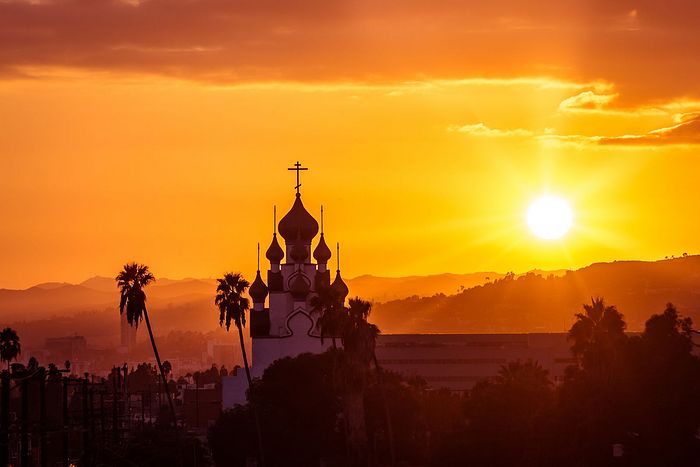
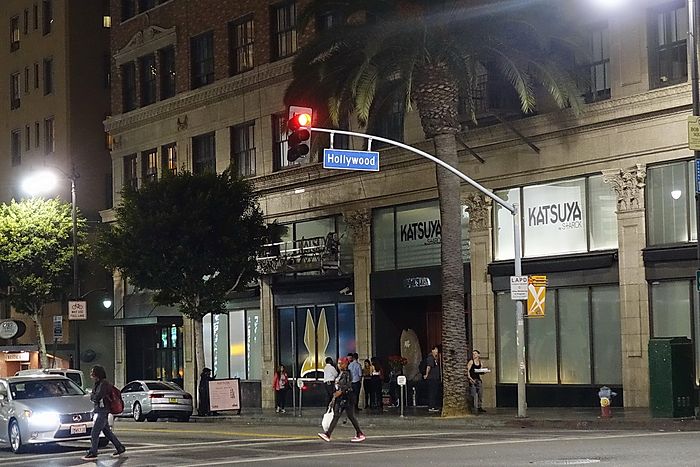
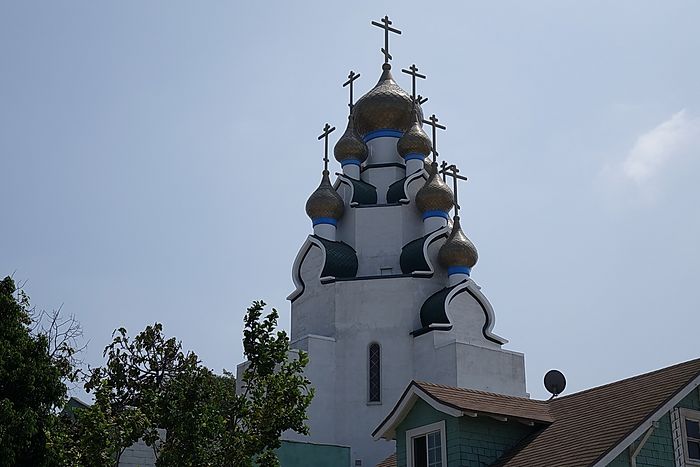
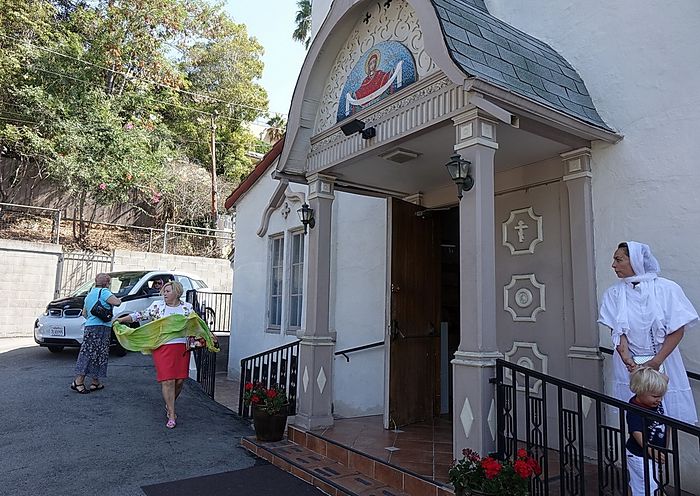
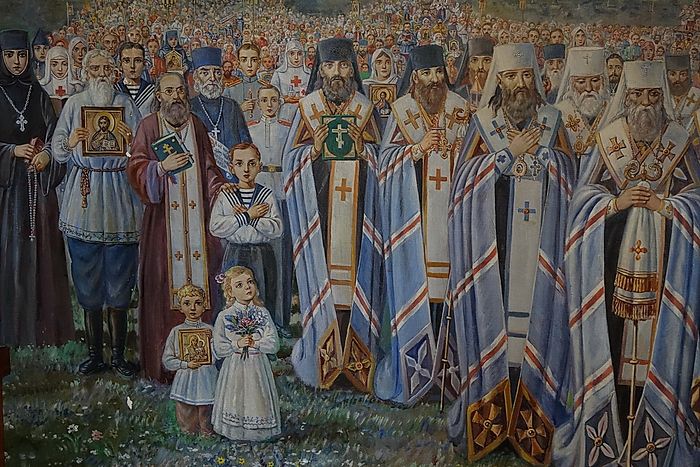
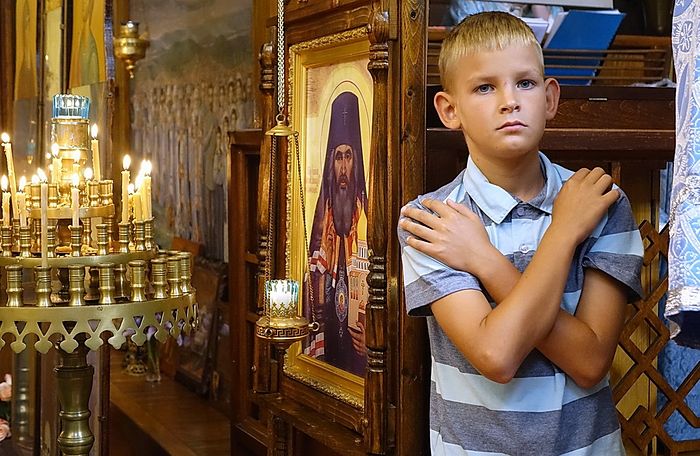
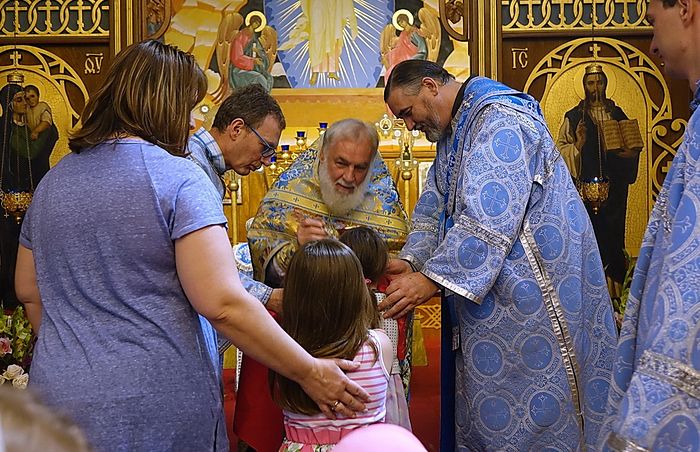
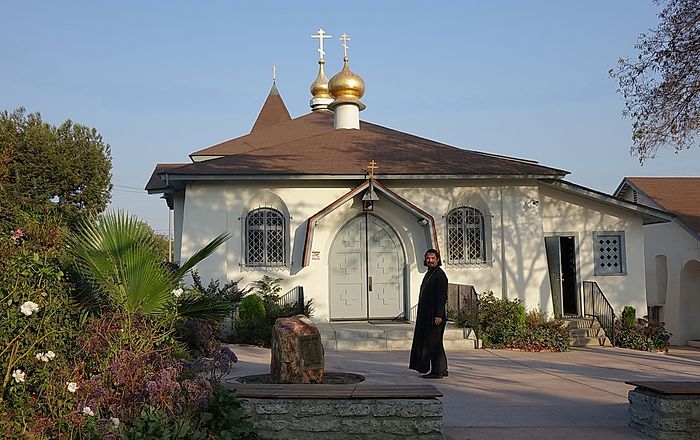
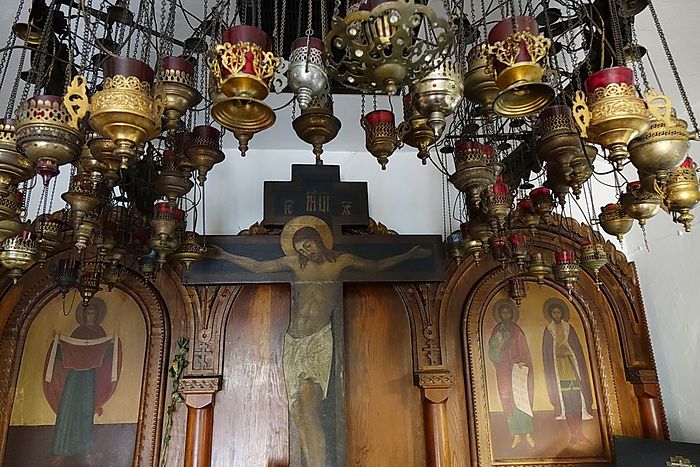
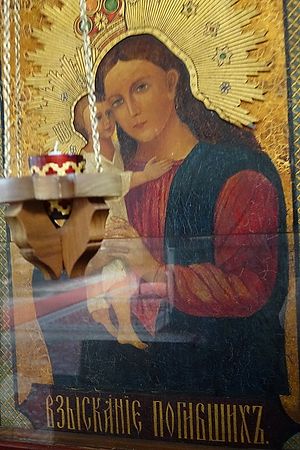
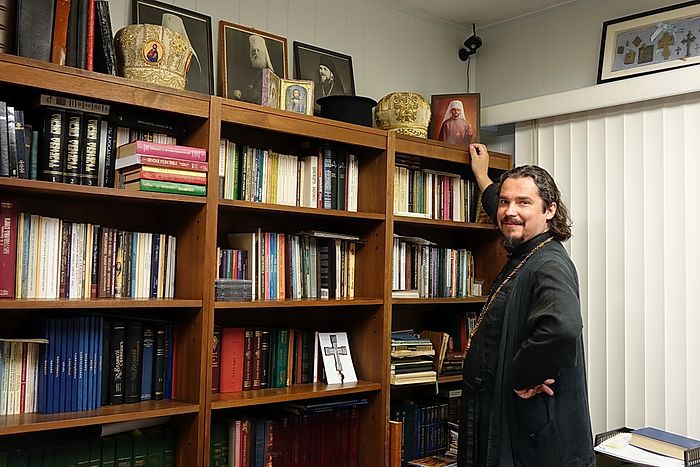
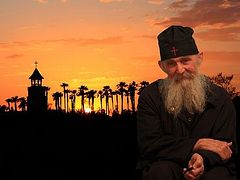
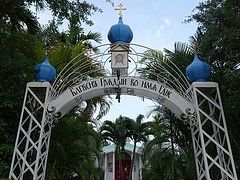
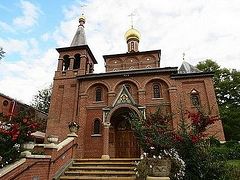
Lovely memories of a lovely time in my life.